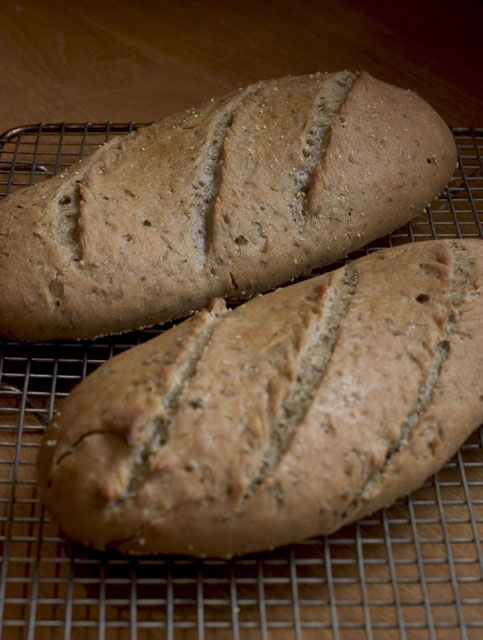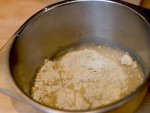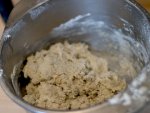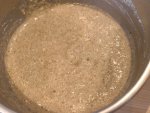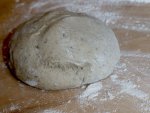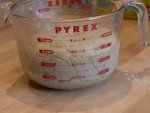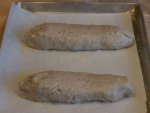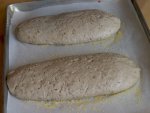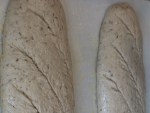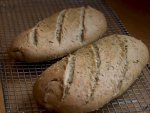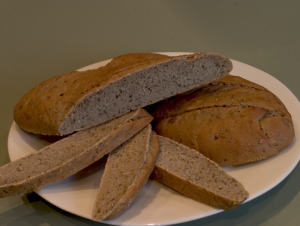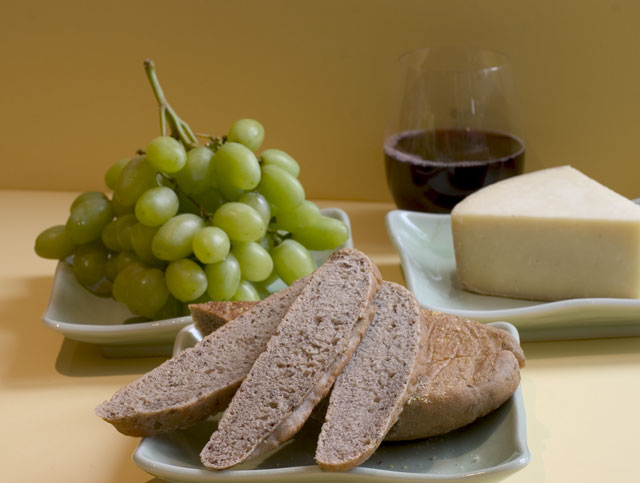I KNOW THAT WHEN YOU ARE SHOUTING ONLINE YOU TYPE ALL IN CAPITAL LETTERS. How do you whisper online? I need to know because what I’m about to say should be whispered. “I loved this bread!” I am whispering it because I am afraid I may be drummed out of the Bread Baker’s Apprentice Challenge.
Most of my bread freak friends who have already made this bread absolutely hated it. Many of them threw it out. Some turned it into croutons and others into breadcrumbs. Someone (I won’t mention any names) called it play-doh with caraway seeds. The main complaint was that it was way too dense and chewy. This is precisely why I loved it. This was no spineless bread. It had guts and personality and wonderful flavour.
The last rye bread we made (New York Deli Rye) was about 1/3 rye flour and 2/3 white bread flour so it had a mild rye flavour. This bread was 100% rye flour. The thing you need to know about rye flour is that it contains pentosan, a gum protein that causes the dough to become gummy if mixed for too long. Extra care has to be taken with kneading this bread. Rye flour has a very low gluten content so we are warned that a 100% rye bread will not have the same soft and high crumb that a bread made with wheat flour will have.
The bread begins with mixing about 1/2 a cup of Phyl (my starter) with rye flour and water. It is just mixed until all the flour is hydrated. No need for it to be smooth. Then this is left on the counter until it doubles in size and this put in the fridge for an overnight rest.
You also prepare a “soaker”. This is a mixture of pumpernickel grind flour and water. it is covered and left out on the counter all night.
The next day the soaker, the starter, white rye flour, salt, caraway seeds and water are mixed for about 6 minutes to form the dough. Then the dough is put into an oiled glass container, covered and left to rise for almost 4 hours, until it doubles in size. Usually this step takes about 1-2 hours. The longer rising time is due to the lower gluten content in rye flour.
After the dough has doubled, it is gently divided into 2 pieces and then formed into batards (oval shapes). Since it was quite late by this point, I covered the loaves and refrigerated them overnight. The next morning I took them out of the fridge and let them sit on the counter for about 4 hours, covered with plastic wrap. You can see that they expanded widthwise, but not very much in height.
Then they were scored and baked in a very hot oven.
Indeed the crumb on this bread is not very open, quite dense. And true, the bread did not rise very much, so my loaves were quite flat. But I loved the true rye flavour of this bread and the chewy texture.
The bread was great with Le Blackburn cheese, grapes and a glass of Syrah wine. I had it again this morning toasted for breakfast and loved it even more.

